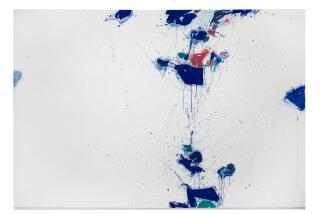Cleveland art museum director gave it prestige
Sherman E. Lee, a former longtime director of the Cleveland Museum of Art whose keen-eyed collecting of old European and Asian masterpieces gave it international prestige, died of natural causes July 9 in Chapel Hill, N.C. He was 90.
Lee took the helm of the museum in 1958 at a propitious time, as a $35-million bequest by industrialist Leonard C. Hanna Jr. had vaulted it into the ranks of the country’s richest art museums.
Over the next 25 years, Lee doubled the museum’s holdings of paintings by old European masters, including El Greco, Goya and Velazquez.
Among the most prized works he acquired were Frederic Edwin Church’s “Twilight in the Wilderness,” Jacques-Louis David’s “Cupid and Psyche” and Nicholas Poussin’s “Holy Family on the Steps.”
Lee also greatly expanded the museum’s Asian art collections with such priceless artifacts as an 18th century portrait of Emperor Qianlong, the empress and her consorts and a bronze standing Buddha from India dated from the late 10th or early 11th century.
He also wrote a definitive text -- “A History of Far Eastern Art” (1964) -- and curated important shows, including an exhibition on 5,000 years of Chinese art for New York’s Guggenheim Museum in 1997.
As a private curator, he advised John D. Rockefeller III, whose celebrated Asian art collection now belongs to the Asia Society.
“He was one of the great collectors,” said Jim Wood, president and chief executive of the J. Paul Getty Trust. “If you had the knowledge and the funds, you could transform a collection, and he did. . . . He really took that museum from a regional museum and made it a major international museum.”
Lee was known as a man with strong opinions who was not swayed by trends. He was averse to the blockbuster show that catered to popular taste and believed in waiting 20 years before buying a piece of modern art. The Cleveland museum did not acquire a painting by Jackson Pollock, for instance, until 1980.
Lee spent the museum’s money on scholarly, often groundbreaking shows designed to maximize the individual viewer’s appreciation of the art on display.
“One was always struck by the simplicity and purity of the installation and the concentration on the absolute highest quality of art,” said Stephanie Barron, curator of modern art for the Los Angeles County Museum of Art.
“At a time when there were many different voices entering the pantheon of the museum world in terms of audience and outreach, Sherman Lee managed to balance the primacy and importance of the work of art yet always cared about making it available to the public.”
His tenure in Cleveland encompassed a few of the more trying moments in the museum’s history. In 1976, he learned that a portrait of St. Catherine believed to be painted by 16th century artist Matthias Grunewald was a fraud. The museum, which had paid $1 million for the forgery, got its money back but kept the painting. Lee hung it in a prominent spot in the conservation department as a warning to be wary of fakes.
In 1984, shortly after he retired from the museum, he was named in an international arrest warrant when French authorities alleged that Poussin’s “Holy Family” had been illegally exported from France. The charges were dropped after the museum agreed to lend the painting to the Louvre.
Lee was born April 9, 1918, in Seattle and grew up in New York City. He attended American University in Washington, D.C., where he earned a bachelor’s and a master’s degree in history. He later earned a doctorate in art history at Case Western University in Cleveland.
While studying for his doctorate, he worked at the Cleveland Museum of Art as an assistant in the Oriental art department. After stints at the Detroit Institute of the Arts and Seattle Art Museum, he served in the Navy and later as a civilian advisor to the staff of Gen. Douglas MacArthur on the preservation of Japanese artworks. In 1952, he returned to the Cleveland museum as curator of Asian art.
After retiring in 1983, Lee moved to Chapel Hill and taught at the University of North Carolina.
He also continued to curate shows and advise private collectors, including Willard G. Clark, a San Joaquin Valley cattle rancher who opened a Japanese art museum in Hanford, Calif., in 1996. In 2000, Clark renamed the museum the Ruth and Sherman Lee Institute of Japanese Art in honor of the eminent Asian art authority and his wife.
In addition to his wife, Ruth, Lee is survived by three children, including Katharine Lee Reid, who was director of the Cleveland museum from 2000 to 2005; and six grandchildren.
--
More to Read
The biggest entertainment stories
Get our big stories about Hollywood, film, television, music, arts, culture and more right in your inbox as soon as they publish.
You may occasionally receive promotional content from the Los Angeles Times.











